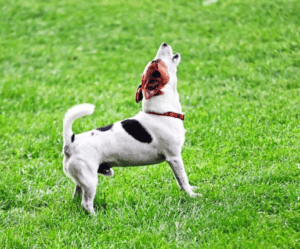Positive reinforcement dog training is a method of training that focuses on reinforcing desired behaviors with rewards, such as treats, praise, and affection. The goal of positive reinforcement training is to increase the likelihood of the desired behavior occurring in the future by rewarding the dog when they display that behavior.
The basic steps of positive reinforcement training are:
- Identify the behavior you want to reinforce.
- Mark the behavior with a signal, such as a clicker or a verbal marker, when the dog performs the desired behavior.
- Reinforce the behavior by giving the dog a reward, such as a treat or praise, immediately after the marker signal.
Some examples of positive reinforcement training include:
- Teaching a dog to sit by rewarding them with a treat when they sit
- Teaching a dog to come when called by rewarding them with a treat or praise when they come
- Teaching a dog to walk on a leash by rewarding them with a treat or praise when they walk calmly on a leash
It is important to make sure that rewards are given at the right time, immediately after the behavior. It is also important to use rewards that the dog finds valuable, and to gradually phase out the rewards as the dog becomes more reliable in performing the desired behavior.
Positive reinforcement dog training is considered to be a more effective and humane method of training compared to methods that rely on fear or punishment. There are several reasons why this is the case:
- Positive reinforcement increases the likelihood of the desired behavior occurring in the future by rewarding the dog when they display that behavior. This is a more effective way of shaping behavior than punishment, which tends to suppress behavior rather than shape it.
- Positive reinforcement training is less likely to cause fear or aggression in dogs. Fear and punishment-based training methods can create a negative association with the trainer or the training process, which can lead to fear or aggression towards the trainer or other people or animals.
- Positive reinforcement training helps to build a positive relationship between the dog and the trainer. Dogs that are trained with positive reinforcement are more likely to trust and bond with their trainer, which can make training more effective and enjoyable for both the dog and the trainer.
- Positive reinforcement training is more adaptable and flexible than fear-based methods. Positive reinforcement can be used to teach a wide variety of behaviors and can be adjusted to suit the individual needs and learning style of each dog.
- Positive reinforcement training is considered to be more humane as it does not rely on physical force, pain or fear to achieve the desired results. It is considered a kinder and more ethical way of training dogs.
It is important to note that positive reinforcement training is not always easy and it takes patience, consistency and good timing. But with proper training techniques, positive reinforcement can help create a happy, well-adjusted, and well-behaved dog.
Fear-based dog training involves using techniques that aim to instill fear or anxiety in a dog in order to control its behavior. This can include techniques such as punishment-based training, physical force, and intimidation. These methods can cause long-term harm to a dog’s physical and mental well-being, and can lead to a range of behavioral issues, such as aggression, fearfulness, and anxiety. Additionally, fear-based training can damage the bond between a dog and its owner, and can make it difficult for the dog to learn and respond to positive reinforcement-based training methods.




